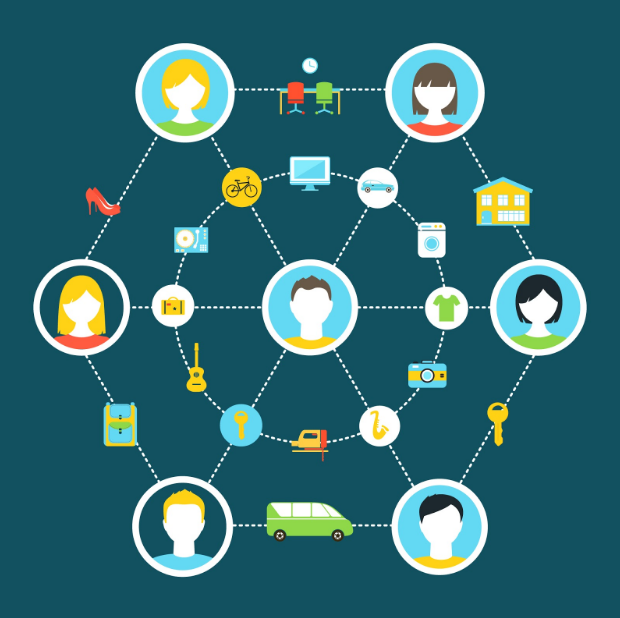
A new economy has emerged where individuals want to share resources with each other. For example, people are investing in projects on Kickstarter, renting clothing instead of owning it on Rent-the-Runway and borrowing cars through Zipcar. We want to own less and experience more. This has spurned the rapid growth of peer-to-peer (P2P) economies in the past five years. According to a Pew report in 2016, 72% of Americans have used a P2P service. P2P economies have emerged across numerous sectors including transportation (Uber), hospitality (Airbnb), finance (Kiva), and retail (eBay). If you look at the fashion and apparel sector, you see a huge change in behavior.
Apart from the technological features behind these P2P platforms, the most important actor in these sharing economies is without a doubt, the “peer” as evidenced by the name. Like any economy, P2P economies rely on the basics of supply and demand. They rely on the fact that individuals are willing to offer their services – whether it be driving a car, selling a dress, or renting a car – as well as the fact that individuals are looking to employ these services. These platforms operate on the basic principles of trust and cooperation between suppliers and demanders.
So, why has this business model become so popular in recent years?
Accessibility
Anyone with access to the internet can use a P2P platform. In fact, actions like booking a car ride have become so habitual in cities, it is the norm. In just a few taps on one’s phone, a car arrives. Additionally, regulations to become a provider of a service are much more lenient compared to traditional industries – just think of how anyone can be an Uber driver, while it took years to earn a taxi medallion. These platforms also provide market access to individuals who don’t have the funds to establish their own business but own desirable assets such as a house, car, or household items.
 Source : TechCrunch
Source : TechCrunch
Choice
Because accessibility to these P2P markets is so easy, there is an extensive base of suppliers resulting in vast options for consumers. While traditional industries offer conventional, mainstream options, P2P marketplaces encompass a much greater range of options for the consumer. An individual looking for a specific vintage necklace or a local, authentic experience in a European town will have much better luck using P2P platforms than buying from a department store or booking a hotel room in a tourist corridor. People are also able to showcase their individuality whether it be through the clothing they’re selling in their Poshmark closet or the home they are renting out through AirBnB.
 Source: Techcrunch
Source: Techcrunch
Social / Trust
A differentiator of P2P marketplaces compared to traditional marketplaces is that it allows for social interaction. Although the two people involved in a transaction may live completely different lives, technological features allow them to connect and get to know each other through uploading photos, private messaging, and curating an online profile. In fact, many people use P2P platforms as a way to socialize and meet new people – think of how online dating has grown in the same way!
Source: ThirdWaveFashion
Cost
People want to save money and P2P economies enable one to do so. A person can buy a luxury designer bag on Poshmark for less than 50% of the discounted price. AirBnB enables consumers to rent an entire apartment in New York City for an average price of $240 compared to the median hotel price of a single room for $180. Moreover, on platforms such as eBay and OfferUp, individuals are even able to negotiate prices.
The emergence and dominance of peer-to-peer marketplaces are reflections of the changing attitudes of individuals – specifically the millennial. The impact of these P2P economies is just beginning—a PWC 2014 report estimates P2P economies will grow to $335 billion in 2025 compared to $14 billion in 2014. Fashion and apparel, alone, is expected to be $33 billion by 2021. As a result, traditional industries are being disrupted and pushed to re-strategize. Businesses and individuals must find ways to integrate into peer-to-peer economies across sectors in order to stay relevant and competitive in today’s economy.
Stayed tuned for the next post on the emergence of Peer-to-Peer marketplaces in retail!